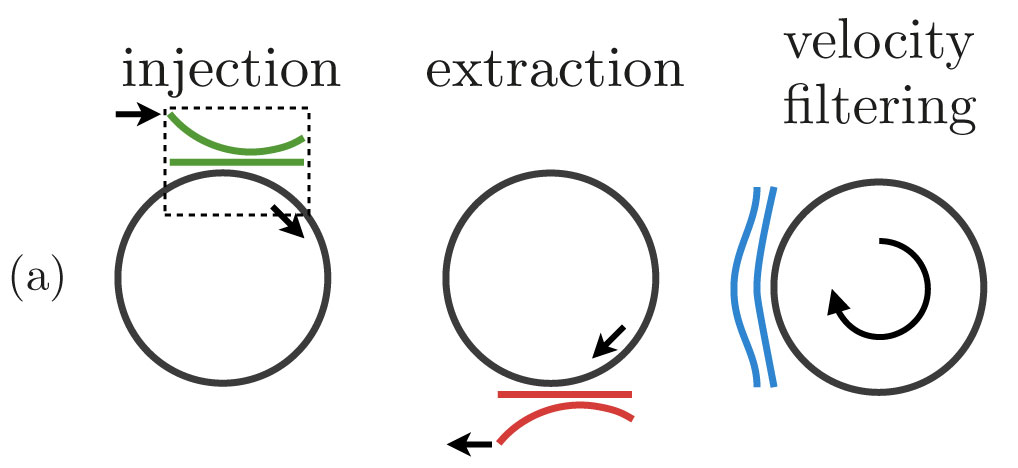EPJ D Highlight - Ultra-cold atom transport made simple
- Details
- Published on 30 June 2014

New study provides proof of the validity of a filtering device for ultra-cold neutral atoms based on tunnelling
Techniques for controlling ultra-cold atoms travelling in ring traps currently represent an important research area in physics. A new study published in EPJ D gives a proof of principle, confirmed by numerical simulations, of the applicability to ultra-cold atoms of a very efficient and robust transport technique called spatial adiabatic passage (SAP). Yu Loiko from the University of Barcelona, Spain, and colleagues have, for the first time, applied SAP to inject, extract, and filter the velocity of neutral atoms from and into a ring trap. Such traps are key to improving our understanding of phenomena involving ultra-cold atoms, which are relevant to high-precision applications such as atom optics, quantum metrology, quantum computation, and quantum simulation.
The authors focused on controlling the transfer of a single atom between the outermost waveguides of a system composed of two dipole waveguides and a ring trap, using the SAP technique. They calculated the explicit conditions for SAP tunnelling, which depend on two factors: the atomic velocity along the input waveguide and the initial atom population distribution among what physicists refer to as the transverse vibrational states.
To check the performance of the proposed approach, they relied on a numerical integration of the corresponding equation—namely the so-called two-dimensional Schrödinger—with parameter values for rubidium atoms and an optical dipole ring trap. Although the SAP technique had previously been reported on with regard to experiments using light beams, it had yet to be applied to the case of cold atoms.
Potential applications of these findings include the preparation of cold atom ring systems to investigate quantum phase transitions, matter wave Sagnac interferometry, the stability of persistent currents and superconducting quantum interference devices (SQUIDs), propagation of matter wave solitons and vortices, cold collisions, artificial electromagnetism, etc.
Y. Loiko, V. Ahufinger, R. Menchon-Enrich, G. Birkl and J. Mompart (2014), Coherent injecting, extracting, and velocity filtering of neutral atoms in a ring trap via spatial adiabatic passage, European Physical Journal D, DOI: 10.1140/epjd/e2014-40696-3





